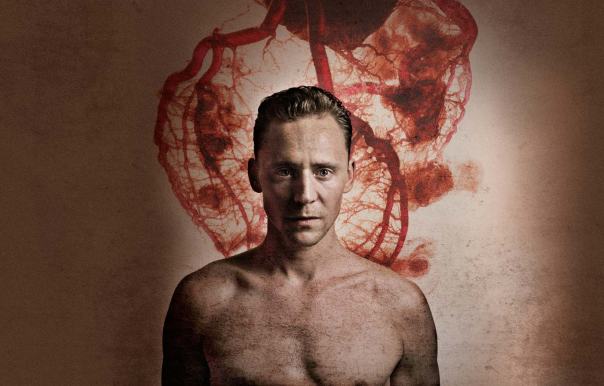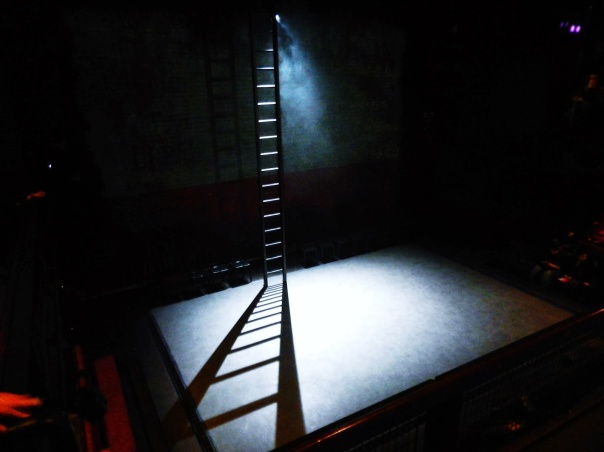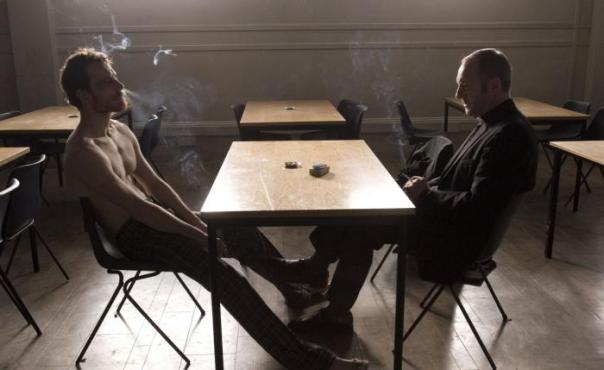So far my reflections on filmed theatre in this blog have concerned themselves centrally with live cinema broadcasts – but looking around online, in iMDB, in iTunes, and the like it’s very clear that many other forms of theatre-as-film exist for the viewing these days. One major player is Digital Theatre, a London media company that since 2009 has offered high quality, high definition recordings of major theatre, ballet, and opera productions for purchase and download. Amidst Digital Theatre’s current offering are about a dozen Shakespeare productions, including work from the Royal Shakespeare Company, the Liverpool Everyman, the Almeida, and most significantly Shakespeare’s Globe.
I’ve been thinking a lot about Shakespeare’s Henry IV plays recently, not least because the RSC has just begun an 8-month run of its newest productions of them, so I thought it would be interesting to go back in time, as it were, and have a look at the Globe’s very well regarded productions of these plays from 2010. I never saw them live myself – 2010 was the year of finishing my PhD, finding a job, getting married – but several of my friends and colleagues did and they’ve become a frequent reference point for talking about the ways the Henry IV plays draw the audience into their world, most centrally through the character of Falstaff (played here by the wonderfully mischievous Roger Allam). So, the question is, how did this work on film?

Very well, I’d say. As with NTLive and RSC live, multiple cameras are used throughout (I counted six cameramen in the final credits, and that seems about right in terms of variety of angles offered in the films), but the work these cameras did seemed noticeably different to me. First and foremost, the shots are fairly fixed, occasionally tracking with an actor but avoiding the sweeps and pans that characterize (or at least punctuate) the broadcasts I’ve seen of late.
Although I don’t know for sure, I suspect this is partly due to technical set-up. Images of the audience are a frequent, and VERY WELCOME fixture in these films, with fringes of the groundlings almost constantly in view when we’re not in close-up (in fact many shots are framed in a way that looks like they are coming from a groundling spectator). Longer shots from what looks like the top gallery and (less frequently) the back of the pit show not only the full stage but also a very large proportion of the house and the audience that fills it, and it struck me that I never spotted a camera within these shots (although I must admit I wasn’t looking too hard). If audience space was blocked off to accommodate technical equipment, this must have been in the seated sections of the theatre and kept to a minimum, meaning I would suppose that the equipment was rather different than that used in the NT and RSC gigs. I certainly didn’t see any evidence of a camera crane in the house itself or in the kinds of shots offered in the films, and in this case I felt that the final product was the better for it.
That’s not to say that cranes and the shots they produce don’t have a place in theatre broadcasting, but rather that great things can be done without them – and perhaps especially in a theatrical space like the Globe. The Henry IV films certainly use mid-shots and close-ups, but only after setting the scene with wider shots of not just the stage but also the whole house. And in distinction I think to the RSC Richard II, which similarly attended to this kind of theatrical framing at the start and end of scenes, the Globe films returned frequently to wider pictures within the scenes themselves. As I’ve already mentioned, these shots were relatively stationary, occasionally panning a little bit with a particular character, with wider shots being used instead for group scenes so that the characters in them walked through the picture, rather than the picture moving with them.
More filmic techniques were limited to gradual zooms on a particular character while he gave a speech – I started to notice this especially towards the end of Part 2, for instance during Falstaff’s ode to sack after his scene with Prince John, which went from a full-length shot of Allam onstage to a head and shoulders shot that allowed us closer access to Allam’s surprisingly tender delivery of the line, ‘If I had a thousand sons…’ We saw this technique soon again when the King received the ‘happy news’ of the supressed rebellion, quickly overshadowed by the pains of his rapidly failing health, as well as during the mournful lines Hal speaks by his father’s deathbed. Very occasionally we also encountered more overtly self-conscious camera and editorial work, including the use of a divided, triptych-like screen at the start of each film, which offered sidelong views of the house to the left and right and scenes of the show to come in the centre. And at the end of Hal’s ‘I know you all’ speech in 1.2 of Part 1, the camera view receded to a wide-angled, upward shot of the Globe’s wooden ‘O’, offering a striking visual evocation of the experience of being in this atmospheric, open air space on a London summer night.
But for the most part these moments that drew attention to the film as film were very few, and while I liked the more filmic touches I also appreciated the quiet, understated manner in which the productions were shot. They certainly backed off in the way I found myself wishing for in the Donmar Coriolanus, and the constant inclusion of the audience helped establish for me not only a feeling of the ‘theatrical’ as I watched these productions four years later from my iPad at home, but also added considerably to my experience of the individual performances, which were frequently audience-oriented — and nowhere more so than in the case of Allam’s Falstaff. These were without a doubt his shows. While Jamie Parker did an excellent job of bringing to life a winsome, loveable, if unconfident and eager-to-please Hal, Allam commanded not only the stage but also the whole theatre with his vivacious, incorrigible chancer of a Falstaff.
Like many of the Globe productions I’ve seen, these Henry IVs frequently, sometimes strenuously played Shakespeare’s lines for laughs, even within potentially serious or more poignant scenes such as Hotspur’s first encounter with Henry IV in Part 1 or Shallow’s reflections in the orchard in Part 2. But the ribaldry started to disappear towards the end of Part 2, with Allam’s Falstaff letting slip the odd glance of regret as the fun of Eastcheap, and of youth, began to fade from view. Things had changed, not only because Harry was spending more time in the court and less in the tavern, but much more importantly because time changes us all, whether we like it or not.
That said, to be able to look back in time in my own way to these productions at the Globe was certainly a treat. I’ll be thinking of them when I go to see the RSC’s Henrys this summer in the theatre and the cinema. The plays themselves offer an interesting take on what it means to be caught in two worlds, to be in time and out of time — something that increasingly interests me in terms of the digital. And while both sets of productions have been firmly period in terms of setting and costume, I think they have something important to say to us now about how identity is shaped by the ways in which we mediate between self and society everyday.









